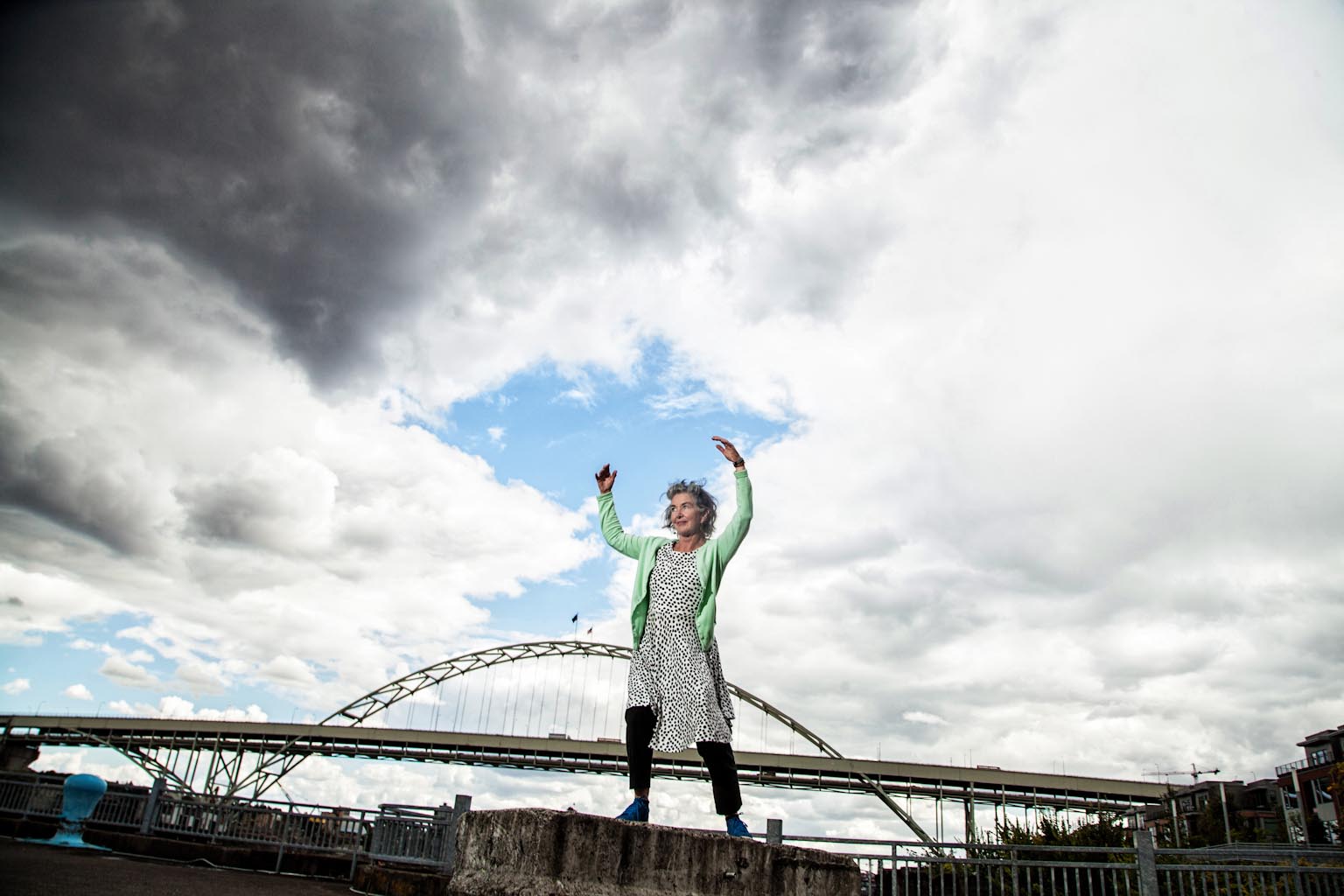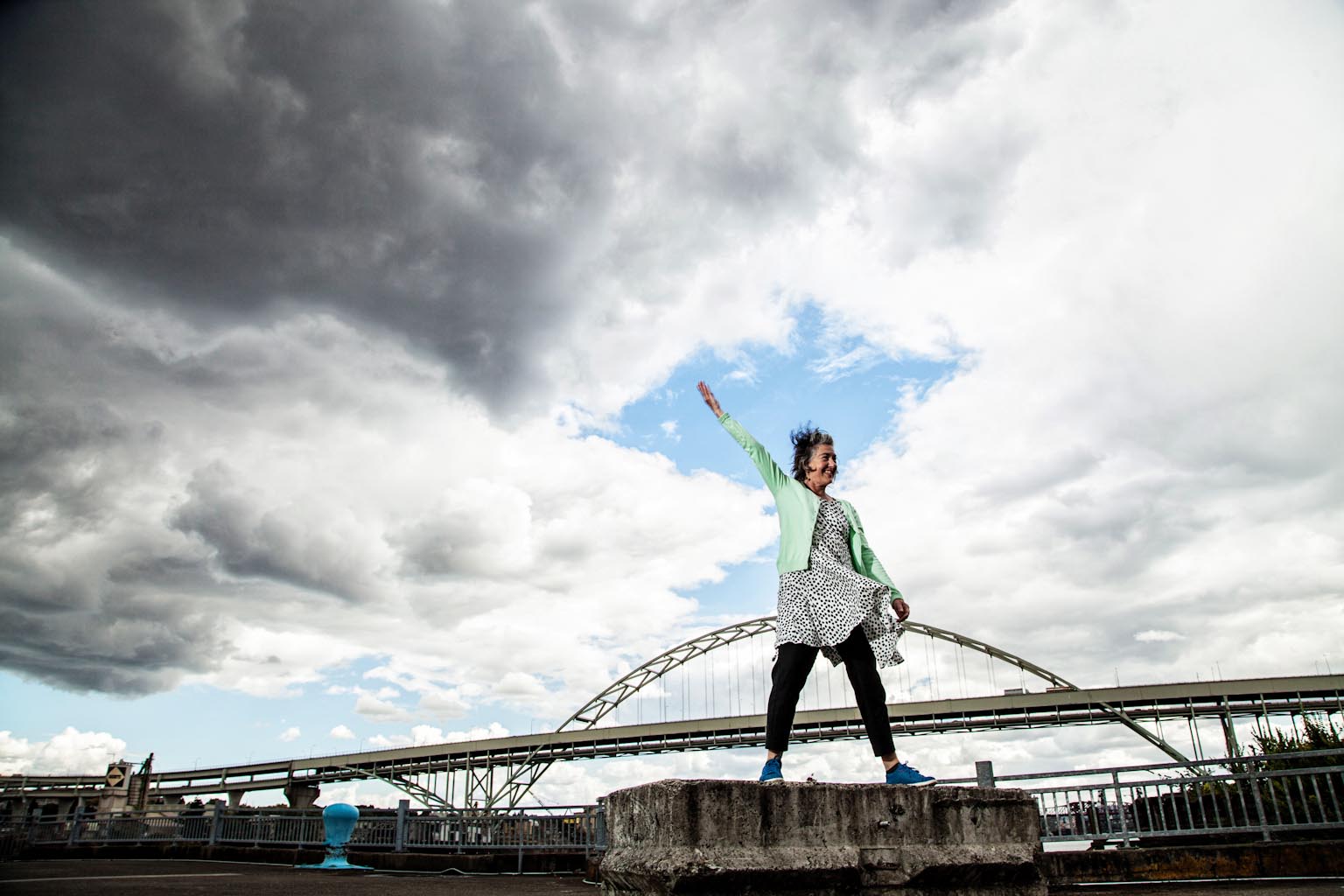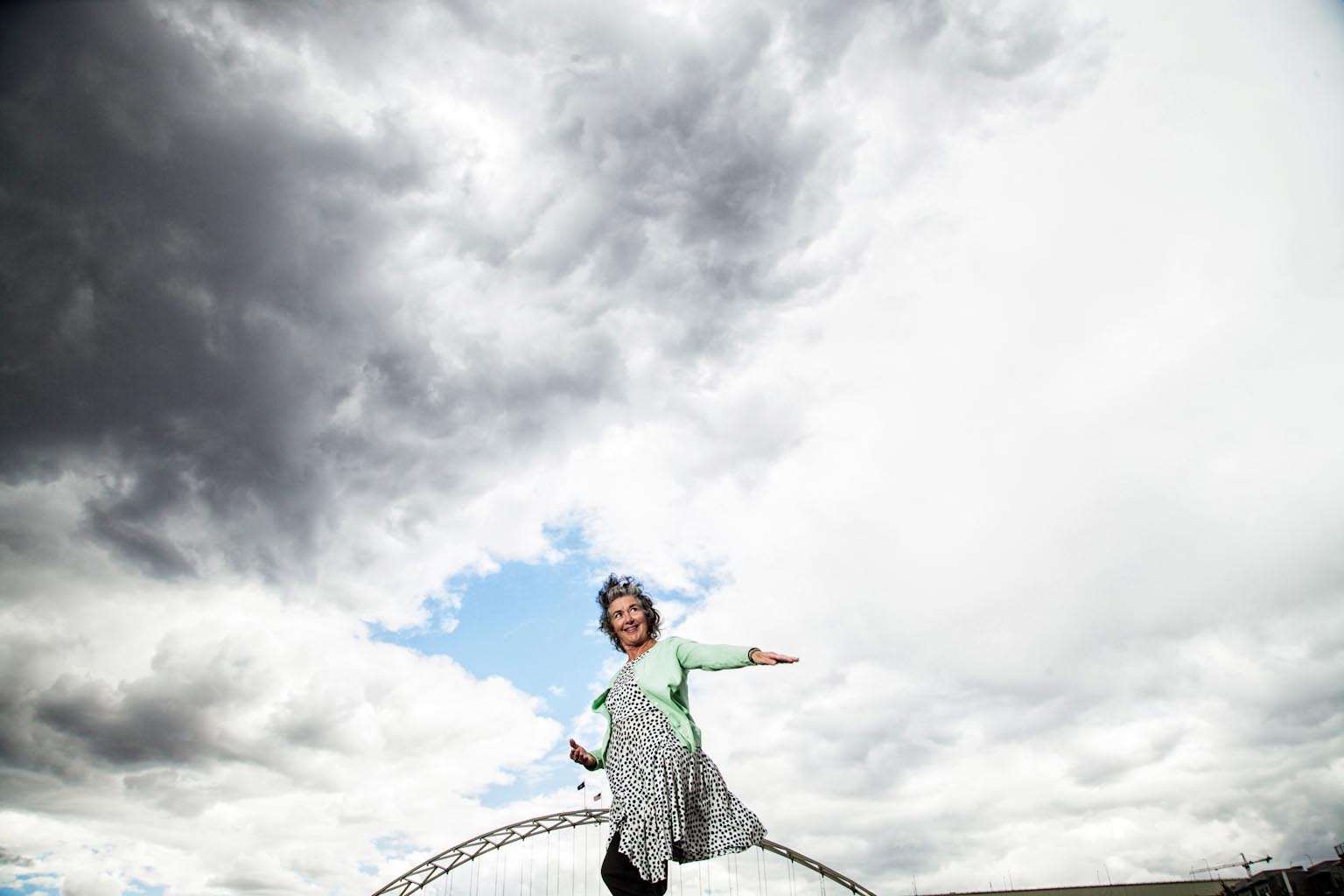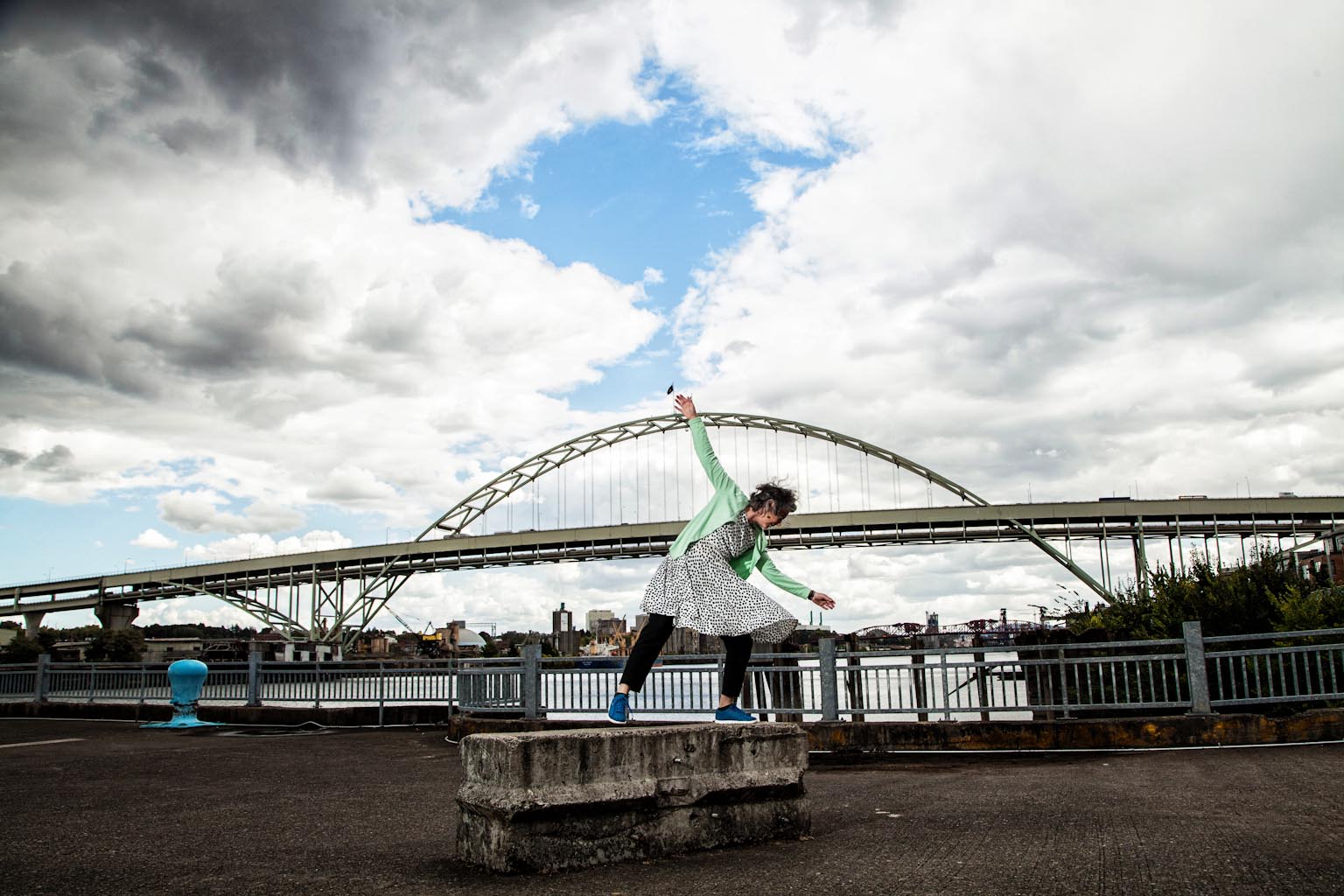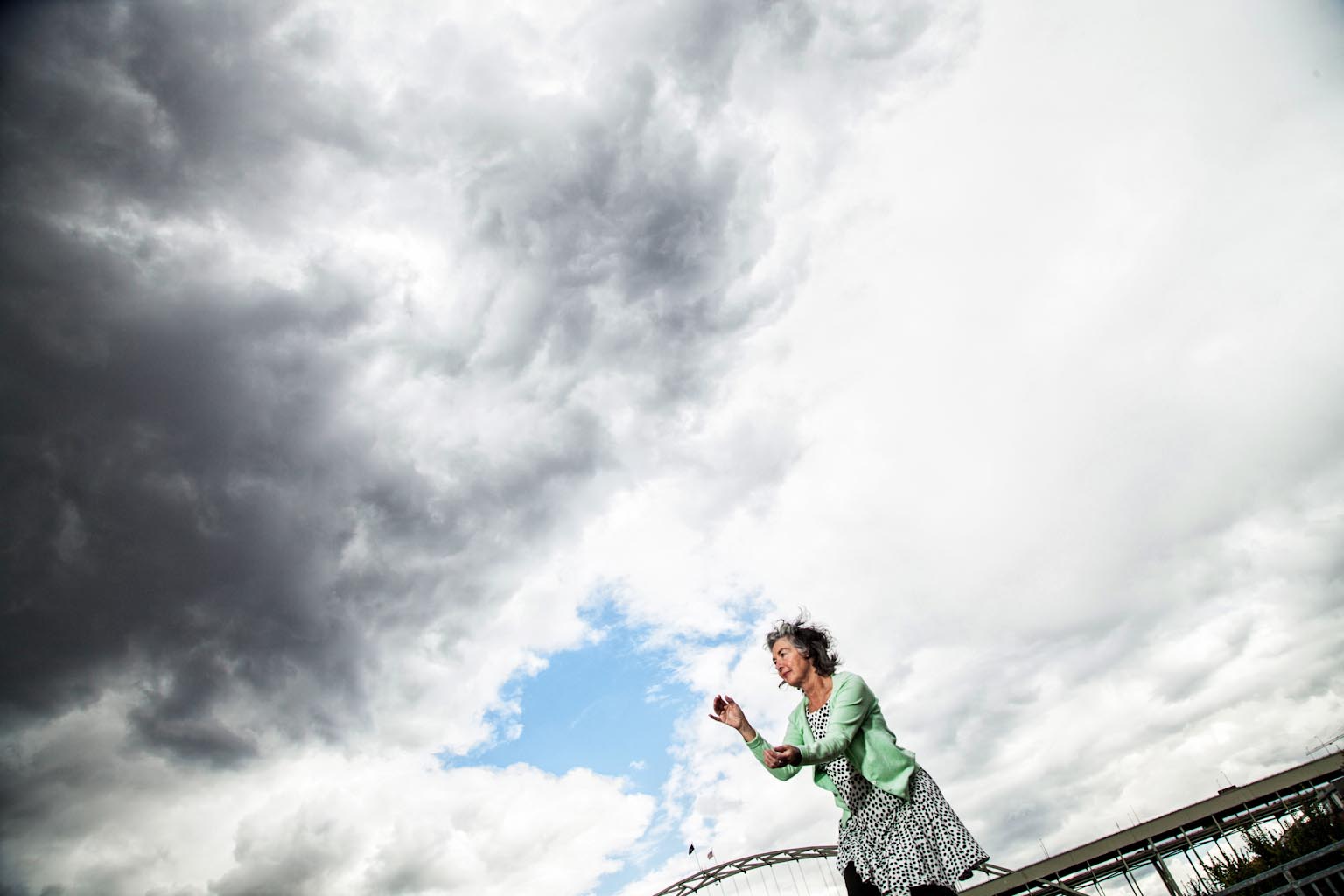Part of the Protest: An Interview with Susan Banyas
BY EMMALY WIEDERHOLT; PHOTOGRAPHS BY GREGORY BARTNING
Up and away on her waterfront stage, Susan didn’t hesitate. She didn’t need to warm up. She didn’t need direction. She didn’t need an audience. She just needed her body and her internal inspiration, and away she flew, into the sliver of wild blue yonder before the silver clouds folded in.
This interview is from the book “Beauty is Experience: Dancing 50 and Beyond.” Click here to learn more about the book, or click here to order your own limited edition copy!
~~
When did you start dancing and what have been some highlights along the journey?
In the little town where I grew up in southern Ohio, the local studio offered tap and ballet. In college, I had to take a dance course for my PE major. A woman named Shirley Wimmer came to my university my senior year. She was from the Nikolais Company, and combined floor work and technique with improvisation and composition. It was an introduction to being an artist, or investigator, rather than being a technician.
Later, I spent a year in east Africa bumming around and mooching off my Peace Corps friends. I was in postcolonial Kenya, Uganda and Tanzania. I have this image of these Kikuyu men coming into the village where I was living with my then-boyfriend. They would circle up and do this jumping dance. I remember feeling moved by their energy, joy and power.
I trained in San Francisco, Portland and New York City in modern and contemporary techniques, but I wasn’t very good. I just didn’t have the desire. I couldn’t relate to companies and protocol. I’d already stepped outside of the box. Then I decided I wanted to be a choreographer. I tried everything – the Broadway thing, the Martha Graham thing, the complicated Cunningham stuff. One Sunday morning, I saw Meredith Monk’s work. It was like a dreamscape. I thought: This is what I want to do. I’m a dreamer; I want to make dreams. I went to study with Meredith Monk at Naropa for a summer, which ended up anchoring me and giving me my tribe of people. I discovered I could be an artist who happened to dance.
My dance life has been a more horizontal and organic process rather than one that’s vertical. Mine was a process of creating collaborations that brought the poetry forth; visual, physical, sound… it’s an integration process. I’ve been working all my life to integrate the story, the history, the body, the voice, the vision, the found object… all the stuff of day-to-day life. That’s the dance.
What does your current dance practice look like?
It’s really minimal. I quit taking classes a long time ago.
I teach, so I keep a lot of my own practice going through that. I teach a class called Everyday Dancing, which is the integration process of taking any moment and working with it as composition.
My daily practice has included writing for the past decade. I’ll get up, move, write, do more movement and then get back to writing.
I also walk a lot, which is my main meditative mind-body practice.
How has your motivation to dance changed over time?
The motives change with the times. In a way, though, my intention has always had a through line, which is I’ve always wanted to be a free agent. I must have gypsy roots.
My interest has always had a political element as well. When I went to east Africa when I was young, I saw the way systems operate and oppress. I never got over that. In fact, it motivated my art to be a part of a positive experience and a counter-force to oppression. I’m more and more committed to that idea. I always want to be part of the protest against economic supremacy, violence, war and advertising.
What does the idea of success mean to you? Do you feel you’ve achieved a measure of success?
If you’re an artist, you’re always failing. You can’t grow unless you take chances.
I have my ups and downs around success. I told Gregg Bielemeier one day: Dance could drop off the planet and nobody would notice. Especially in the sense of experimental work. There’s a tiny little amount of grant money for individual artists, and there’s a million of us. And I don’t want to compete with a 25 year-old beginning choreographer. But that’s the way it’s structured.
My success has been self-generated and more amongst my colleagues and collaborators than from any official stamp telling me I’ve made it. But then, I don’t think I’ve ever sought that stamp. At Naropa, the philosophy was: If you’re an artist, your art is your practice. The practice is what matters and art is the byproduct. Therefore, it’s been more important to keep the practice in motion than to think about fame and fortune.
What do you perceive is your legacy?
I’m leaving a body of work that hopefully allows us to start to listen to each other’s stories, which in turn generates a generous wisdom and intelligence. It goes beyond the boxes that keep us separated and in competition with each other. Dance can be very vicious and competitive. All art is. But I think the paradigm is shifting. I want to think of my legacy as being some part of that shift, so that we start to think more about sustainability. We need to get away from profit models and think more broadly, to integrate art into the creative life of every human. Every human has a creative intelligence, but for many it gets shut down early. My legacy is to feed the creative visionary self and help people know they have value. I want to see young people feeling valued, not because they have good grades and are headed for Yale, but because of who they are as humans. I hope my tools, techniques and writings are part of that vision.
Is there a set of circumstances under which you would stop dancing?
Only if I’m dead.
I think dance is an energy that is manifested physically. As long as I’m alive and my energy is working, I’ll be dancing in some way.
What advice would you give to the next generation of dance artists?
Stay curious. Sometimes in the professional world, I notice a lack of curiosity and a need to be right. I think I made a lot of mistakes, but they got me on my path. It’s about the confidence that you’re doing your life and there’s no good or bad… that’s the only thing. Get into it. Enjoy it. Trust it.
Any other thoughts?
As I get older, I find I’m a better dancer than when I was younger because I bring more joy and confidence to each moment.
~~
Susan Banyas co-founded SO&SO&SO&SO with Louise Steinman in 1976 as a multimedia performance collaboration, and co-founded and operated Dreams Well Studio from 1991 to 2003. Her classes have been presented in studios, universities, conferences and schools for 35 years, and form the basis of her writing, directing and collaborations. Her performance works No Strangers Here Today and The Hillsboro Story integrate memory with political and racial history, and Blue Wheel is an ongoing meditation on the color blue through movement, images, voice and music.
This interview is from the book “Beauty is Experience: Dancing 50 and Beyond.” Click here to learn more about the book, or click here to order your own limited edition copy!

